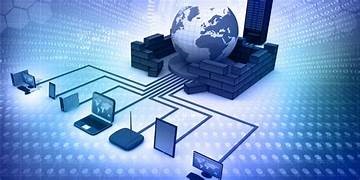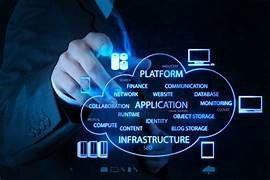Networking and Software Solutions
Networking and software solutions are essential components of our interconnected world, enabling seamless communication and efficient data management across various devices and platforms. In the following paragraphs, I will provide an overview of networking and software solutions, highlighting their importance, key concepts, and popular technologies.
Networking Solutions:
Networking solutions refer to the technologies and practices used to connect different devices and systems to share information, resources, and services. Networking is crucial for businesses, organizations, and individuals to access the Internet, share data, and communicate effectively. Here are some key aspects of networking solutions:
- Local Area Network (LAN): A LAN connects devices within a limited geographical area, such as a home, office, or campus. Ethernet and Wi-Fi are common technologies used in LANs.
- Wide Area Network (WAN): A WAN spans larger geographical areas, connecting multiple LANs. The internet is the most prominent example of a global WAN.
- Routers and Switches: Routers and switches are networking devices used to direct and manage data traffic within networks. Routers enable communication between different networks, while switches facilitate communication within a network.
- Network Security: Networking solutions must prioritize security to protect data and prevent unauthorized access. Firewalls, VPNs (Virtual Private Networks), and encryption are essential security measures.
- Cloud Networking: Cloud-based networking solutions allow businesses to deploy and manage their networks in the cloud, providing scalability and flexibility.
Software Solutions:
Software solutions are applications or programs designed to address specific needs or problems. These solutions are developed to improve productivity, efficiency, and effectiveness in various areas. Here are some notable software solutions:
- Operating Systems: Operating systems, such as Windows, macOS, and Linux, manage computer hardware and provide a platform for running applications.
- Database Management Systems (DBMS): DBMS software solutions enable efficient storage, retrieval, and manipulation of data in databases.
- Customer Relationship Management (CRM): CRM software helps businesses manage customer interactions, track sales, and improve customer satisfaction.
- Enterprise Resource Planning (ERP): ERP software integrates various business processes, such as accounting, human resources, and inventory management, into a unified system.
- Collaboration Tools: Collaboration software solutions like Microsoft Teams, Slack, and Google Workspace facilitate team communication, file sharing, and project management.
Popular Networking and Software Technologies:
- Internet Protocol (IP): The fundamental protocol used for internet communication, allowing devices to exchange data over networks.
- Wireless Technologies: Wi-Fi, Bluetooth, and NFC (Near Field Communication) enable wireless connectivity between devices.
- Cloud Computing: Cloud-based solutions provide on-demand access to computing resources, storage, and applications over the internet.
- Virtualization: Virtualization technology allows multiple virtual machines or operating systems to run on a single physical machine, improving resource utilization.
- Software-Defined Networking (SDN): SDN separates network control from hardware, enabling centralized management and programmability of networks.
- Internet of Things (IoT): IoT connects various devices to the internet, allowing them to communicate and share data, enabling smart applications and automation.
In conclusion, networking and software solutions play a critical role in our modern world, supporting communication, data sharing, and efficient business operations. As technology continues to evolve, these solutions will become increasingly vital in shaping our interconnected world.Networking and software solutions are essential components of our interconnected world, enabling seamless communication and efficient data management across various devices and platforms. In the following paragraphs, I will provide an overview of networking and software solutions, highlighting their importance, key concepts, and popular technologies.
Networking Solutions:
Networking solutions refer to the technologies and practices used to connect different devices and systems to share information, resources, and services. Networking is crucial for businesses, organizations, and individuals to access the Internet, share data, and communicate effectively. Here are some key aspects of networking solutions:
- Local Area Network (LAN): A LAN connects devices within a limited geographical area, such as a home, office, or campus. Ethernet and Wi-Fi are common technologies used in LANs.
- Wide Area Network (WAN): A WAN spans larger geographical areas, connecting multiple LANs. The internet is the most prominent example of a global WAN.
- Routers and Switches: Routers and switches are networking devices used to direct and manage data traffic within networks. Routers enable communication between different networks, while switches facilitate communication within a network.
- Network Security: Networking solutions must prioritize security to protect data and prevent unauthorized access. Firewalls, VPNs (Virtual Private Networks), and encryption are essential security measures.
- Cloud Networking: Cloud-based networking solutions allow businesses to deploy and manage their networks in the cloud, providing scalability and flexibility.
Software Solutions:
Software solutions are applications or programs designed to address specific needs or problems. These solutions are developed to improve productivity, efficiency, and effectiveness in various areas. Here are some notable software solutions:
- Operating Systems: Operating systems, such as Windows, macOS, and Linux, manage computer hardware and provide a platform for running applications.
- Database Management Systems (DBMS): DBMS software solutions enable efficient storage, retrieval, and manipulation of data in databases.
- Customer Relationship Management (CRM): CRM software helps businesses manage customer interactions, track sales, and improve customer satisfaction.
- Enterprise Resource Planning (ERP): ERP software integrates various business processes, such as accounting, human resources, and inventory management, into a unified system.
- Collaboration Tools: Collaboration software solutions like Microsoft Teams, Slack, and Google Workspace facilitate team communication, file sharing, and project management.
Popular Networking and Software Technologies:
- Internet Protocol (IP): The fundamental protocol used for internet communication, allowing devices to exchange data over networks.
- Wireless Technologies: Wi-Fi, Bluetooth, and NFC (Near Field Communication) enable wireless connectivity between devices.
- Cloud Computing: Cloud-based solutions provide on-demand access to computing resources, storage, and applications over the internet.
- Virtualization: Virtualization technology allows multiple virtual machines or operating systems to run on a single physical machine, improving resource utilization.
- Software-Defined Networking (SDN): SDN separates network control from hardware, enabling centralized management and programmability of networks.
- Internet of Things (IoT): IoT connects various devices to the internet, allowing them to communicate and share data, enabling smart applications and automation.
In conclusion, networking and software solutions play a critical role in our modern world, supporting communication, data sharing, and efficient business operations. As technology continues to evolve, these solutions will become increasingly vital in shaping our interconnected world.



